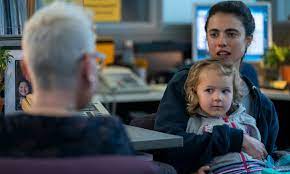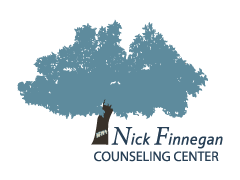Domestic Violence isn’t Always What You Think
A Reflection on Netflix’s “Maid”
A Reflection on Netflix’s “Maid”
I grew up in a world sheltered by the cushion of privilege and financial stability with glasses of naivety. Even now, years later as a mental health practitioner with experience volunteering in women’s shelters and assisting with crises situations – who has met and learned about people from many different backgrounds, I am still shocked to learn about the disempowerment and fear inflicted on people through our justice system, alone.
Recent events and information has brought to light more and more about how the systems are filled with mazes, constant circles, pain, and impossibly seeming obstacles for those who already barely have resources to attempt their way through. Sure, the bleeding hearts of the world repeatedly attempt to lend support, but even that has limits and millions of people in need have nowhere to turn.
Currently trending on Netflix is the series, “Maid”. A fictional show that is loosely based on the real life of Stephanie Land, a woman who fought her way out of poverty and abuse, to find success as an author, journalist, and speaker. Land also works to shine a light on the disempowered and marginalized people of our society. While it has its critics, I have found through research that the show creates a decently accurate portrayal of how the system treats the most vulnerable among us. There are hundreds of articles out there exploring difficulties navigating the system and surviving and exiting abusive and devastating situations. So, while I do think that is an important and valuable feature of this show, I am choosing to spend the remainder of this article on a separate piece that I believe is equally valuable, the mental health stories. There are some especially poignant and notable mental health story lines that really help paint a picture.
Mass misconceptions when it comes to abuse.
Early on when the protagonist – single mom, Alex, is trying to find resources with a social worker, the social worker asks, “There are beds at the domestic violence shelter, but uh…you said you’re not DV?”
She replies, “I would really hate to take a bed from somebody that’s been abused for real.”
“Abused for real? What does that mean?” The social worker inquires.
“Beaten up. Hurt.” Alex explains.
“And what does fake abuse look like? Intimidation? Threats? Control?”
You can see Alex’s face being triggered by the words surrounding the other areas of abuse, that she never considered abuse, as the social worker hands her the brochure for the DV hotline and shelter.
There are multiple facets at play in this view point. First, as a society, we believe that harm is visible, evident, i.e., fingerprint bruises on a wrist that was grabbed, broken bones, signs of physical altercations and fighting back. It’s difficult for us to truly feel for the unseen injuries, and even harder for us to know who to believe. Sadly an intelligent abuser knows this, and they know that we as a society are missing what abuse really is. It’s not about breaking bones, it’s about stealing someone’s ownership of themselves, becoming the puppet master, and slowly limiting any interference to that control. So, while you may need to see the physical signs of pain inflicted, any functional Magnetic Resonance Imaging (fMRI) scan can show you that the emotional and psychological pain inflicted, registers as the exact same form of pain as those physical signs you are looking for in the brain. Yet there is no one who can see the wounds caused by those assaults. You are alone in your pain, so much so, that you begin to truly believe something is wrong with you; that this is your fault, and that this does not count as abuse, even as inescapable as it is.
Let’s look at some signs of abuse seen in this film:
- Alex has flashbacks of her intoxicated ex-boyfriend, Sean, in her face, above her, yelling at her that she is “Crazy”, “Stupid”, “Useless”.
- Outside of Alex’s mentally ill mother, her only friends are ‘Sean’s friends’, and while she may think they will be there for her, they prove that they are loyal to him.
- Alex is blindsided by a court appearance when Sean uses his family support to obtain a lawyer. Alex has no resources and no one to explain the system to her. She is alone in this court room and watches helplessly as her child is given over to her abuser and his problematic mother. Who also shames her when she arrives at court terrified, confused, and with daughter in tow.
- When Alex returns to Sean, he slowly begins to limit her resources, refusing to assist her with her phone when she can’t pay, and taking away a car she was leant by a friend, so she cannot access work to pay for herself. The only way out is a long walk carrying her daughter toddler to a pay phone and a number she has written down.
- When Alex begins to show the signs of wear and tear mentally from this abuse and eventually falls into learned helplessness and deep depression, Sean tightens the rains more, by criticizing her every move and putting demands upon her few actions. He does not attempt to get her help or allow other’s access to her.
- He brings home another woman and sleeps with her while Alex is “asleep” in the next room with their daughter. A sign of how little he respects her or sees her as a worthy person. He can do whatever she wants, and she has no recourse.
We are all humans in struggle.
It’s also rarely as simple as good versus evil. As you may be able to understand from Sean’s, Alex’s ex-boyfriend and father of her child, reasons for wanting to control someone come from demons like fear of abandonment or avoiding other emotional pain like shame, as well as a very clear struggle with substance abuse.
We also meet Regina, a woman whom Alex cleans. At first glance, she appears selfish and uncaring, despite having a seemingly perfect life (at least from a financial perspective). Through Alex’s consistent work ethic, grace and loyalty to Regina, they develop a friendship and she shares her own story of suffering and survival.
We even meet, Nate, the ‘good guy’ who also seemingly has it all together and appears as a generous selfless person. However, we see his own insecurities at play and his own attempts at having control over Alex, even if less subtle, play out through their relationship.
People often have VERY good reasons for the things they do, and that is not an excuse, but it is a framework that gives us a better footing on which to approach this very real, systemic, and trans-generational issue.
Transgenerational trauma and patterns.
Another aspect of mental health and development that was beautifully woven into the film is the impact of trans-generational experiences. It’s hard to imagine how traumatic experiences can be passed down, but it is so common. In terms of survival, we learn from our parents, we model our brain after them. We learn to respond and act as they do because each surviving adult has skills that we need. However, the system is not perfect, and our developing brain cannot easily discern between healthy survival and unhealthy dysfunction. You see her mother in a continuous pattern of depending on a man to care for her and almost always to her detriment. From an alcoholic, abusive husband (Alex’s father), who is oddly similar to and supportive of Sean to a gambling addicted imposter who loses every last bit of property and financial stability Alex’s mother had left. They do allude to an attempt at breaking this cycle of dependence, when Alex and her mother, escaped her father and moved to Alaska, but the tale ends with her mother identifying herself as a failure who is unable to survive on her own, and in the end again chooses a man over her own health and freedom. When we really see Alex breaking the pattern is when she comes out of the depression and attempts freedom again. We see her willingness to access resources and her efforts to find herself and reclaim her worthiness.
There is value in maintaining your humanity.
This part really struck me because often what we see of people in the world is their callouses from too many painful experiences in connection with others. It’s incredible to see how Alex continues to be kind to others and especially thoughtful and engaged with her daughter throughout her journey. I tried on two different lenses as I watched her put up with very difficult people. One was viewing her as a pushover, who allows people to mistreat and take advantage of her, but the other was someone full of forgiveness and hope, who recognize how complicated people are, especially after taking care of her severely (undiagnosed) bi-polar mother since she was “6 years old”. Her ability to recognize the many facets of people and behavior may have been a honed survival skills that actually saved her in the end. Regina, a dismissive and callous woman when first met, becomes part of her support system by the end because Alex persevered in kindness and never gave up on her. While it does take Alex time throughout the series to find her voice and learn to stand up for herself, we learn through her story that strength is not synonymous with cruelty, but instead results from honesty, compassion, communication, and values.
My work as a therapist has consistently reminded me of one very important truth — what we get to see and know of others is so limited; yet we are quick to judge, vilify, and blame. The only true way to start to mend the broken parts of our society is with a persistent openness to challenge your beliefs, move away from judgment, embrace curiosity, and recognize the humanity in each person no matter who they are or what they have done.
Thank you Stephanie Land, Molly Metzler, and the rest of your creative team for shining such a brilliant light on the complexities of the human condition and where we fall short as a village.
Tracy Lehman, MA, LMFT
Outreach Counselor
Nick Finnegan Counseling Center



